
[257] Phlomis fruticosa, Jerusalem Sage
Introduction
Phlomis fruticosa, Jerusalem Sage, is an ornamental plant with sage-like leaves and spectacular yellow flowers, sometimes grown in the form of a hedge.
It is a close relative of the genus Salvia, most species of which are generally called Sage. [In horticultural contexts it is common to refer to both Phlomis and Salvia by their scientific genus names.]
Some other species of Phlomis may be called Jerusalem Sage, including some species formerly in Phlomis now moved to Phlomoides.
There is another plant, Salvia hierosolymitana, also called Jerusalem Sage.
Taxonomy
Kingdom – Plants
Division – Vascular Plants
Class – Angiosperms (Flowering Plants)
Order – Lamiales
Family – Lamiaceae
Subfamily – Lamioideae
Genus – Phlomis
Scientific Name – Phlomis fruticosa
Name
Salvia has been used since Roman times to describe the Common Sage plant, derived from salvere, ‘to be healthy.’ The English word sage comes via Old French from the Latin.
Sage is also used for related plants, especially those with similar grey-green leaves.
I don’t, think the Jerusalem Sage is native to the area of Jerusalem but presumably at some time it was thought to have originated there.
Phlomis is the Ancient Greek name for this plant, possibly from the Greek for ‘flame’ – as the leaves may have been used for lamp wicks.
As we have seen for [114] Dasiphora fruticosa, Shrubby Cinquefoil, the Latin fruticosa means shrubby and has nothing to do with fruit.
Description
Jerusalem Sage is a small evergreen shrub with elongated, finely wrinkled grey-green leaves covered in fine hairs.
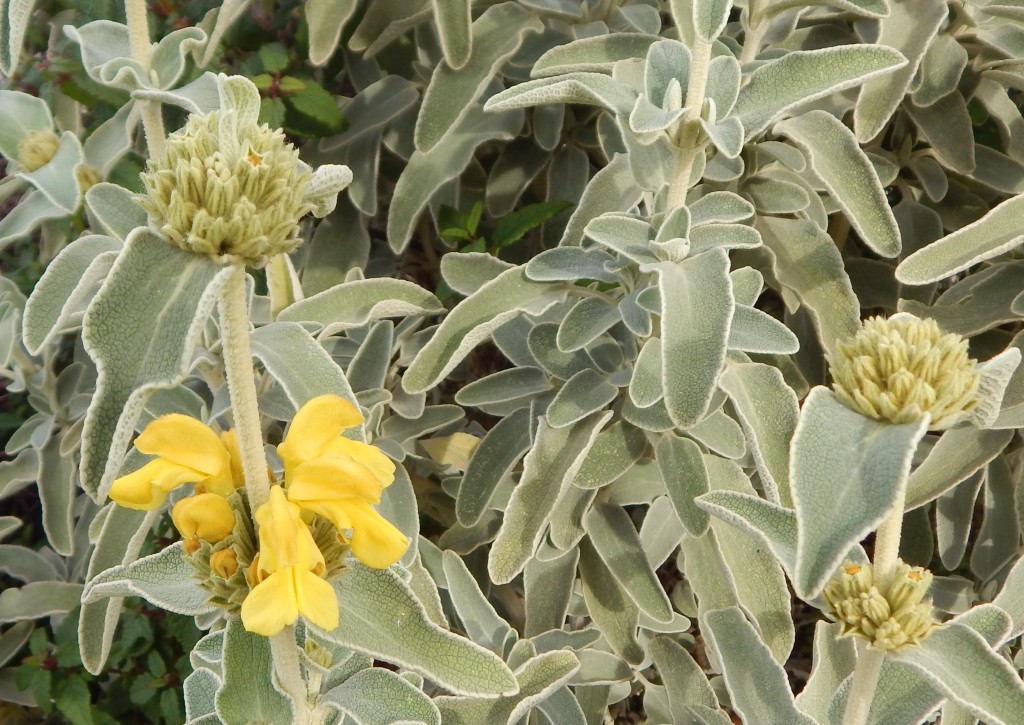
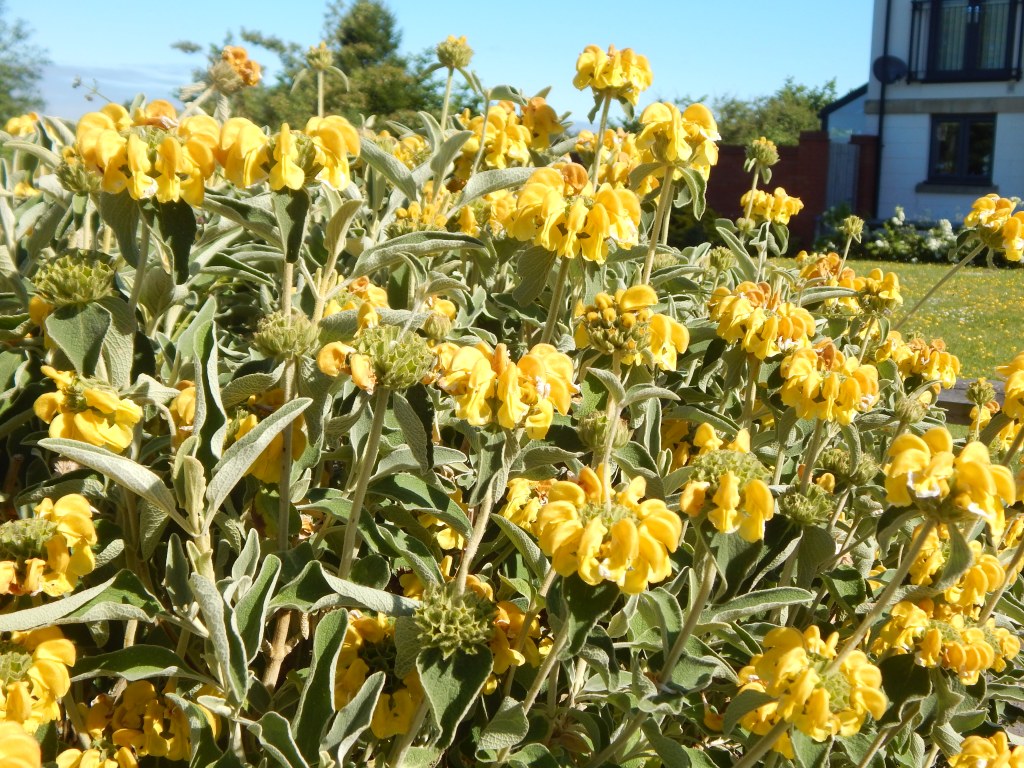
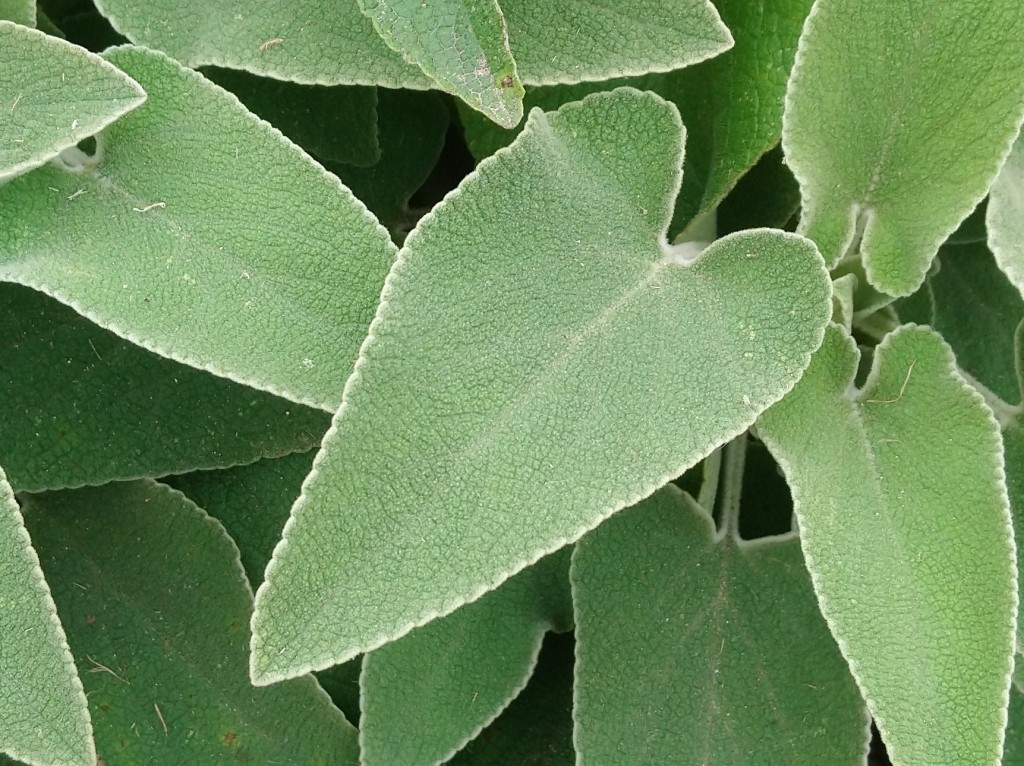

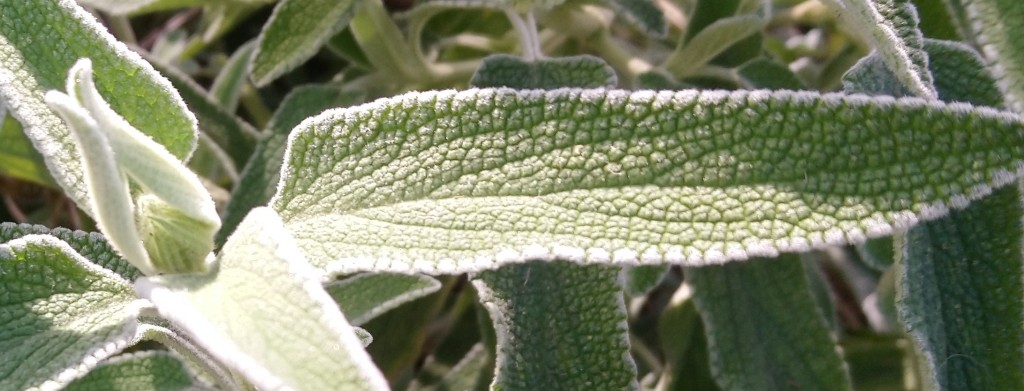
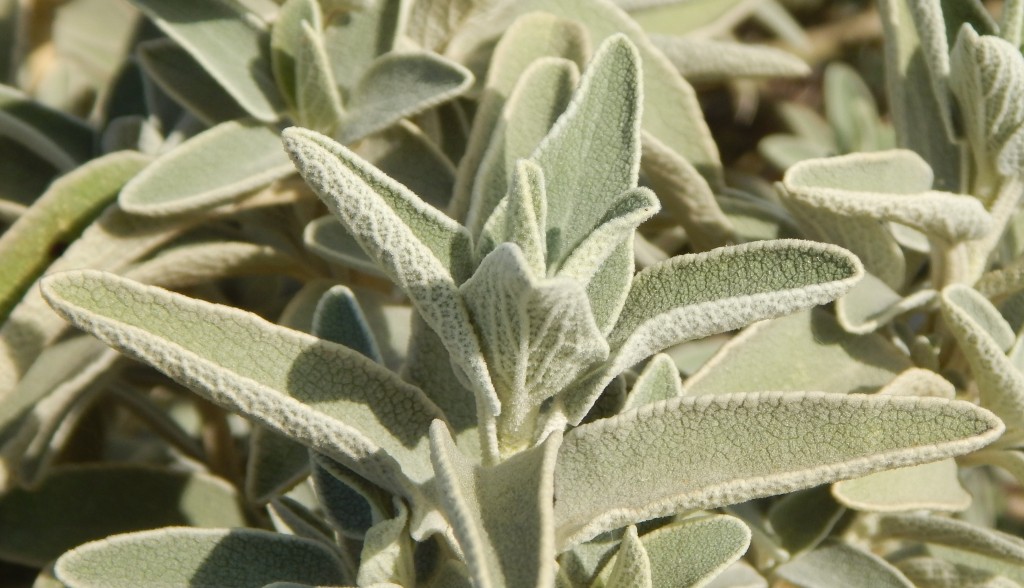
Its dark yellow tubular flowers grow in whorls. (A whorl is a botanical structure surrounding the stem.) Each stem may support whorls on its length as well as the top.
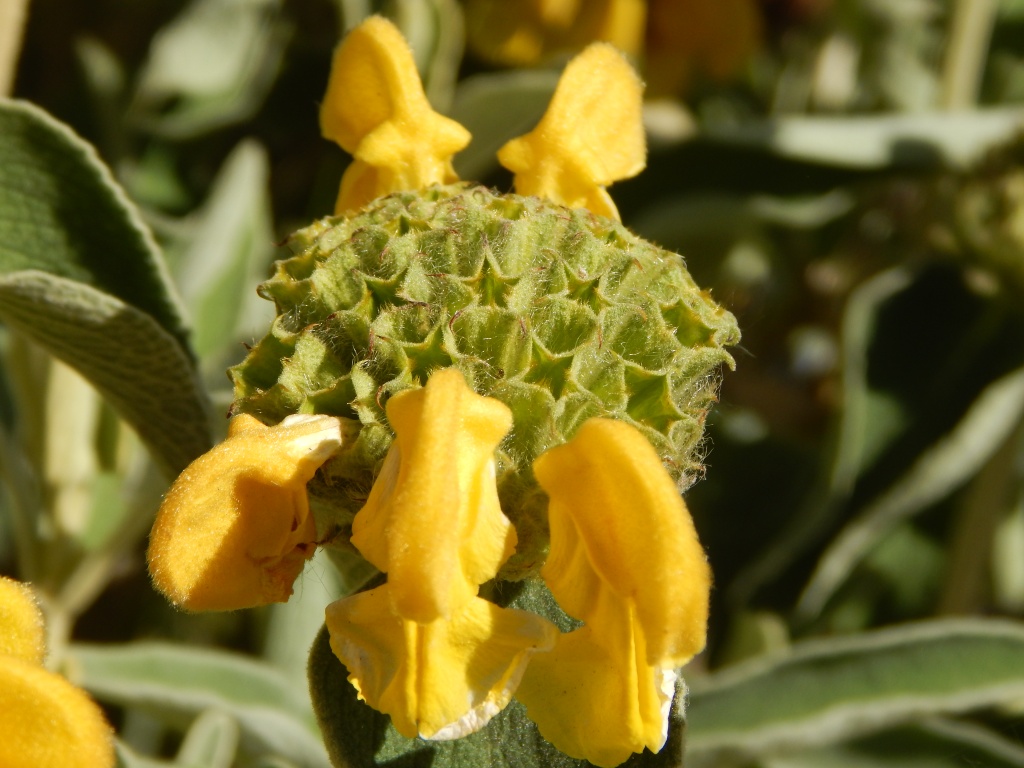
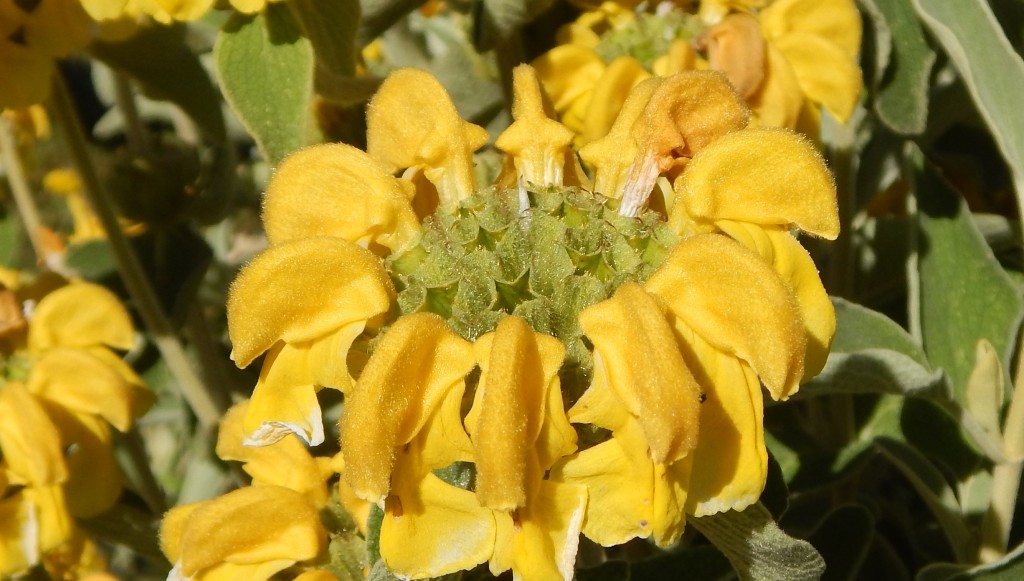
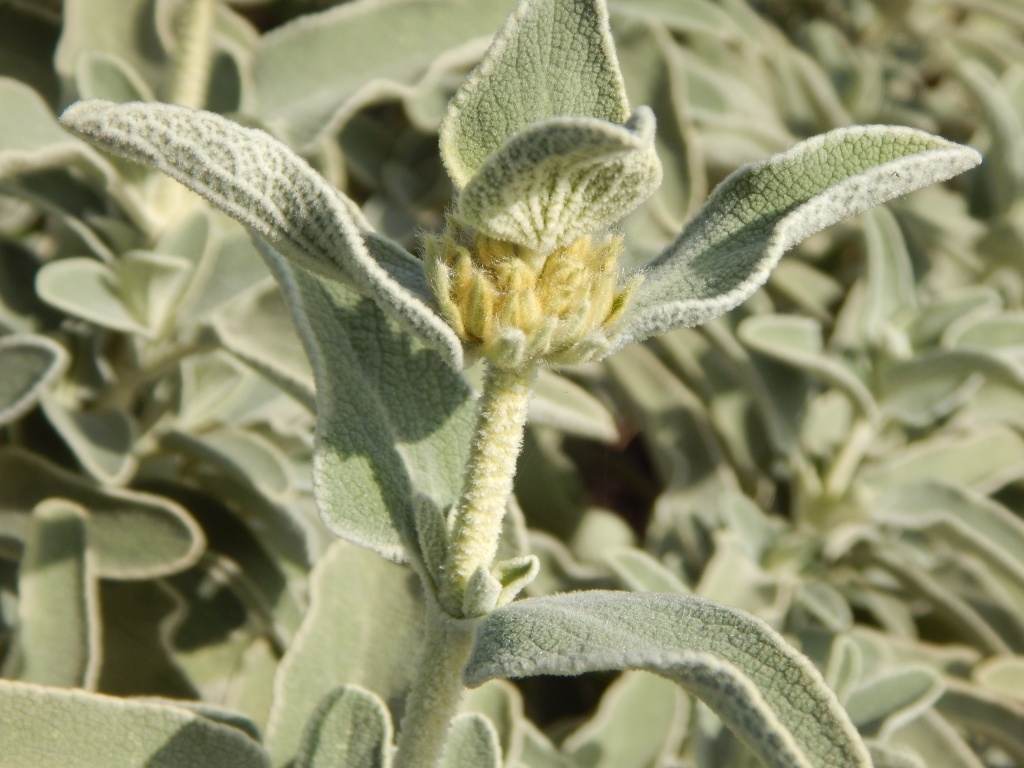
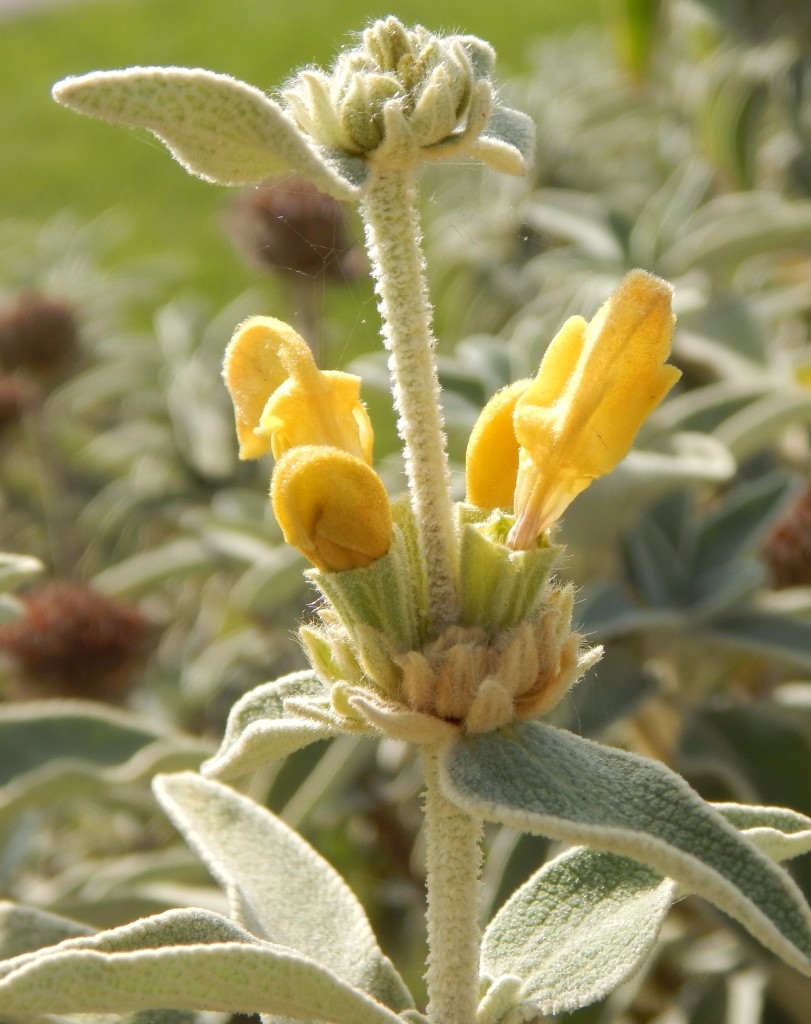
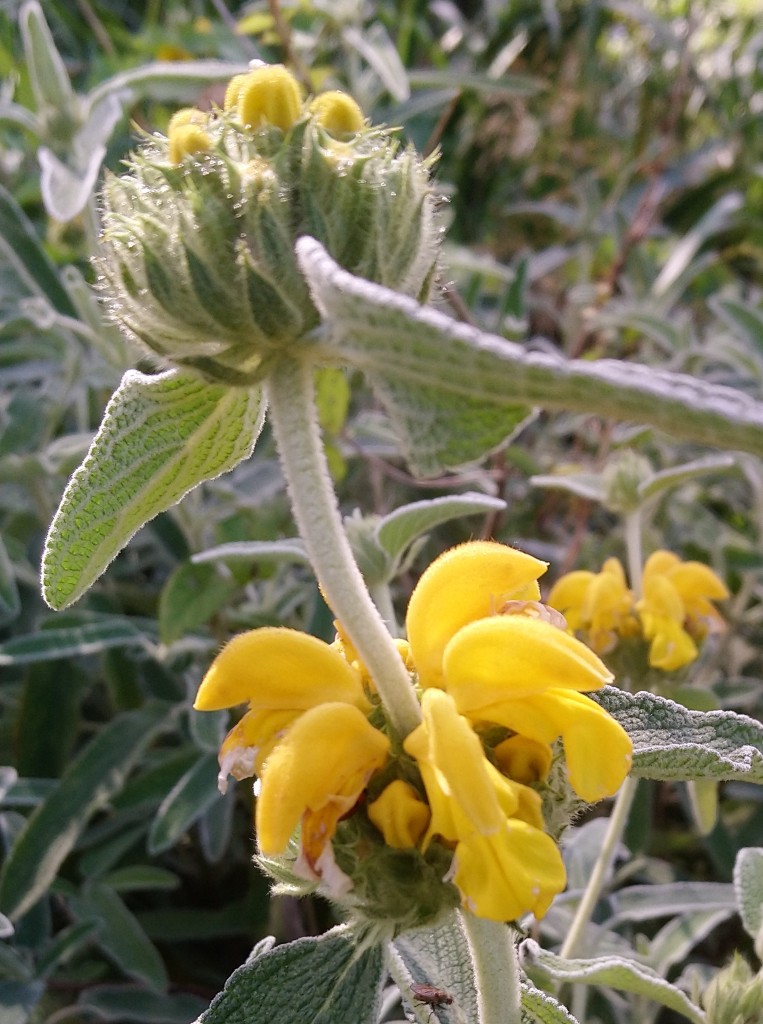
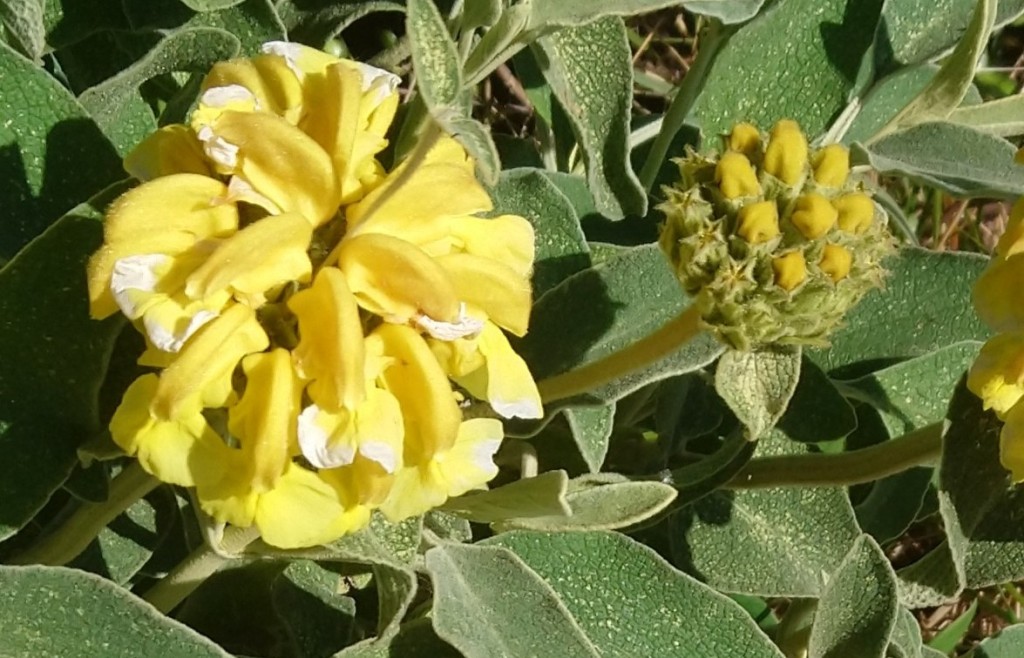

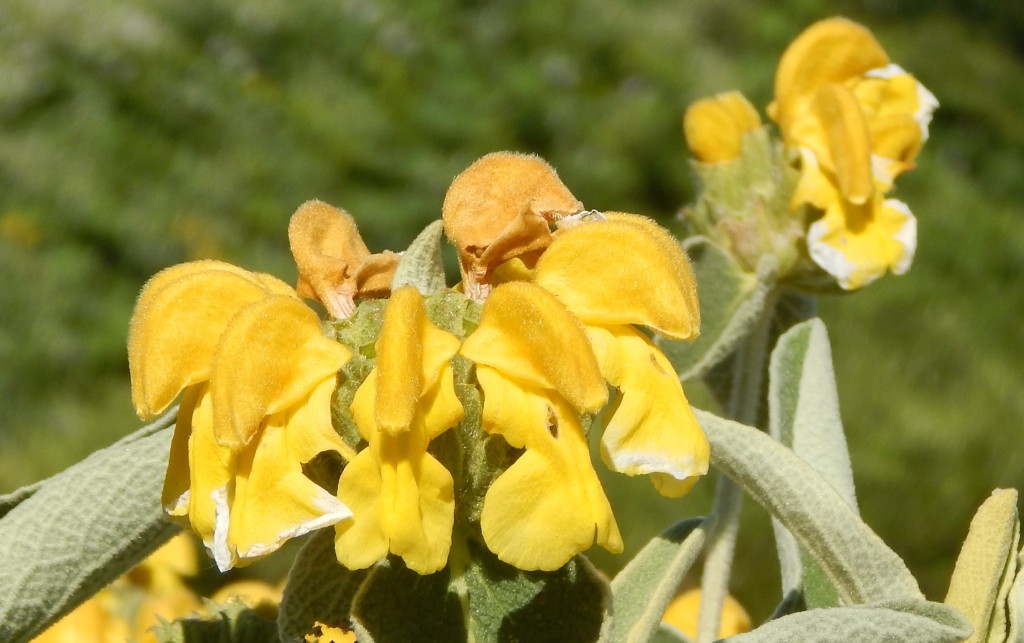


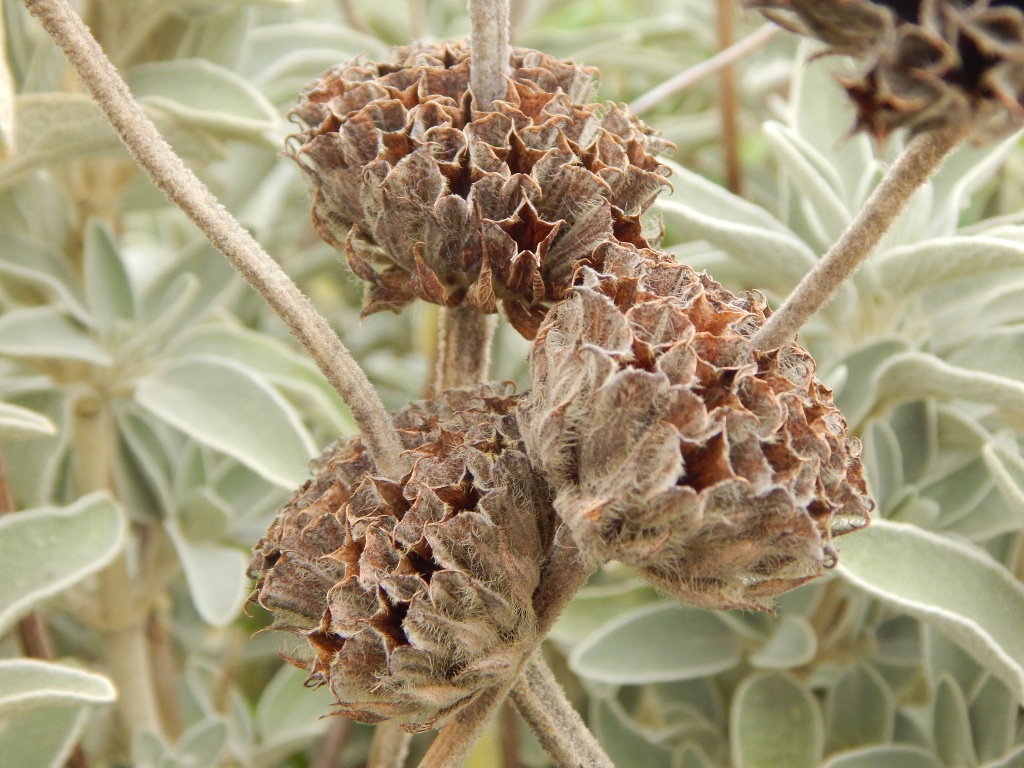
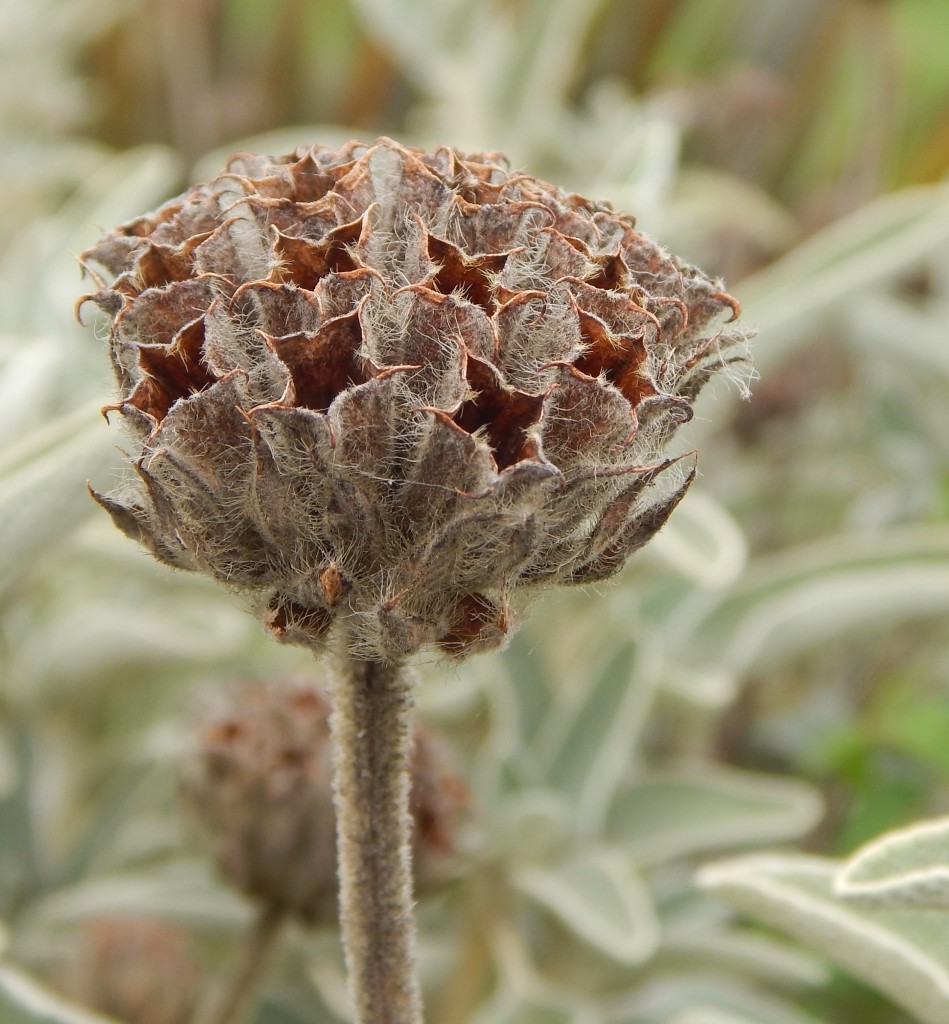
Habitat and use
Phlomis fruticosa is native to the region of the eastern Mediterranean.
It is widely grown as an ornamental plant, sometimes in the form of a hedge.

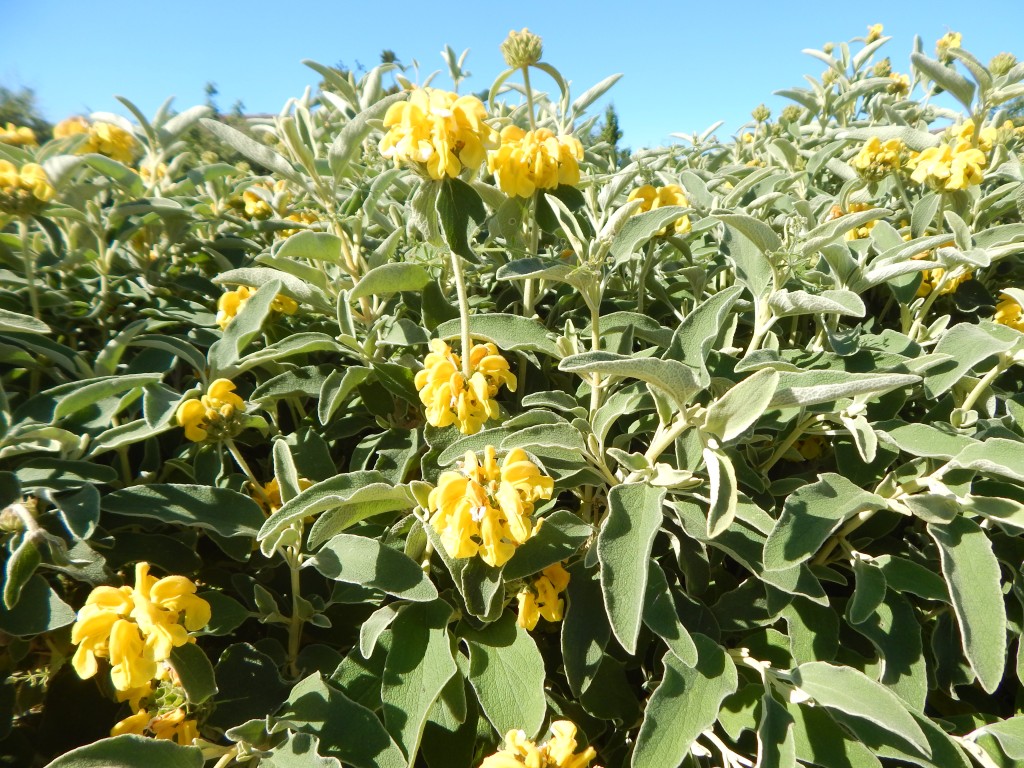
See also
The family Lamiaceae includes many plants called Mint, [193] Deadnettle or Sage – including [199] Lavender and many culinary herbs such as Basil, Rosemary, Mint, Sage, Savory, Marjoram, Oregano and Thyme.
